Joffre
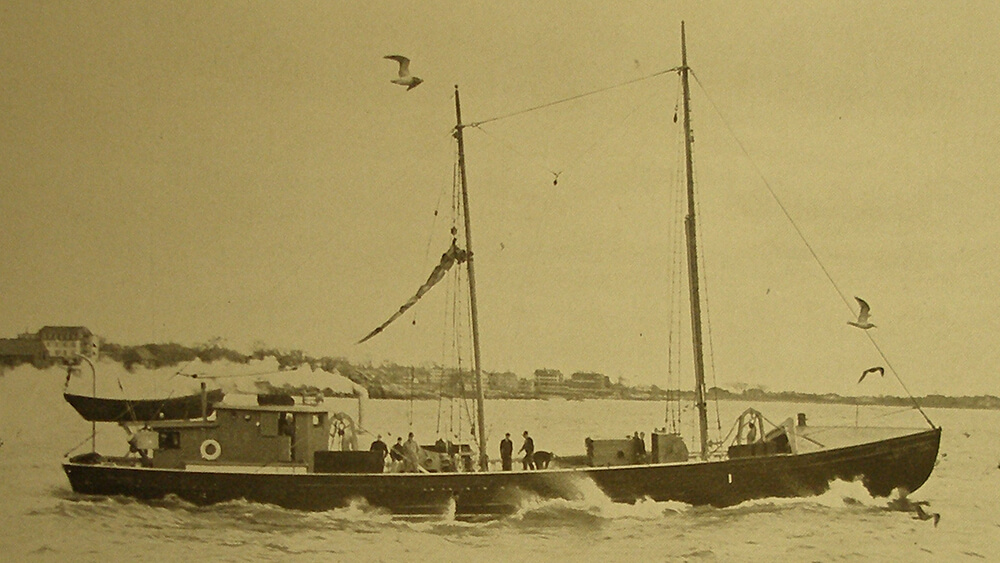
Ship Stats
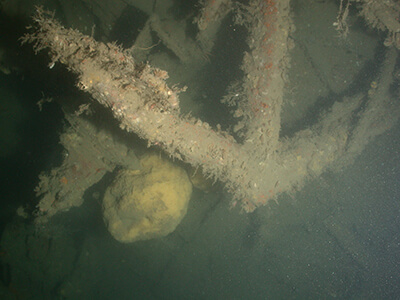
Depth: over 300 feet
Length: 105.5 feet Breadth: 25.2 feet
Depth of Hold: 11.8 feet
Tonnage: 140 gross tons
Built: 1918, wooden-hull, two-masted, auxiliary gas fishing schooner, Essex, Massachusetts
Port of Registry: USA
Owner: Arthur D. Story
Namesake: Marshal Joseph Jacques Césaire Joffre, the commander in chief of the French army in World War I from 1914-1916
Date Lost: August 10, 1947
Owner at time of sinking: Simon P. Theriault
Crew: 10
Sunk By: Fire Survivors: 10 out of 10
Data Collected on Site: Side-scan sonar, ROV photography and video
Significance: Joffre was designed by Thomas F. McManus, who was considered one of the most prominent naval architects of the 20th century through his alterations to traditional schooner designers. These alterations allowed safer and more comfortable conditions for sailors working at sea. They also increased speeds for ships like Joffre to reach fishing grounds faster. Joffre therefore is a tangible link to the conversion from hook-fishing schooner to a diesel-powered schooner, which changed the fishing industry and dramatically altered America's relationship to seafood. It was listed on the National Register of Historic Places in 2009.
Present Day
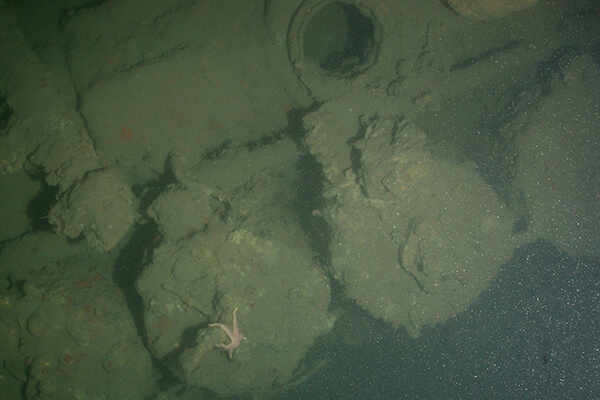
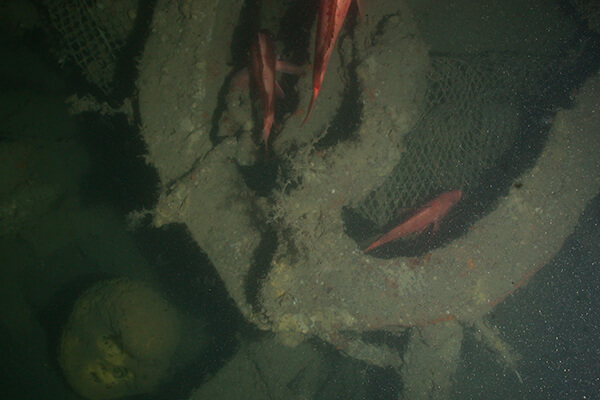
Joffre's remains consist of lower hull structure, propulsion components, hardware, and fishing gear. The ship's three-bladed propeller, propeller shaft, and engine are all still connected at the stern. The eight-cylinder engine sits upright along the ship's centerline while its exhaust stack is broken off nearby. The rudder rests on the starboard side adjacent to the hull. Ninety of its 105-foot long hull remain intact along the seafloor, but the shipwreck only rises approximately three feet from the muddy seafloor on the starboard side. The rest is either broken apart, deteriorated, or buried, particularly on the port side where most of the surviving hull is covered. There is considerable fishing gear such as a trawl winch, two trawl doors, a gallows frame, and a trawl net. Combining these artifacts and the shipwreck's dimensions with historical research, archaeologists were able to identify the vessel as Joffre, and then successfully nominate it to the list of the National Register of Historic Places in 2009.
Historical Background
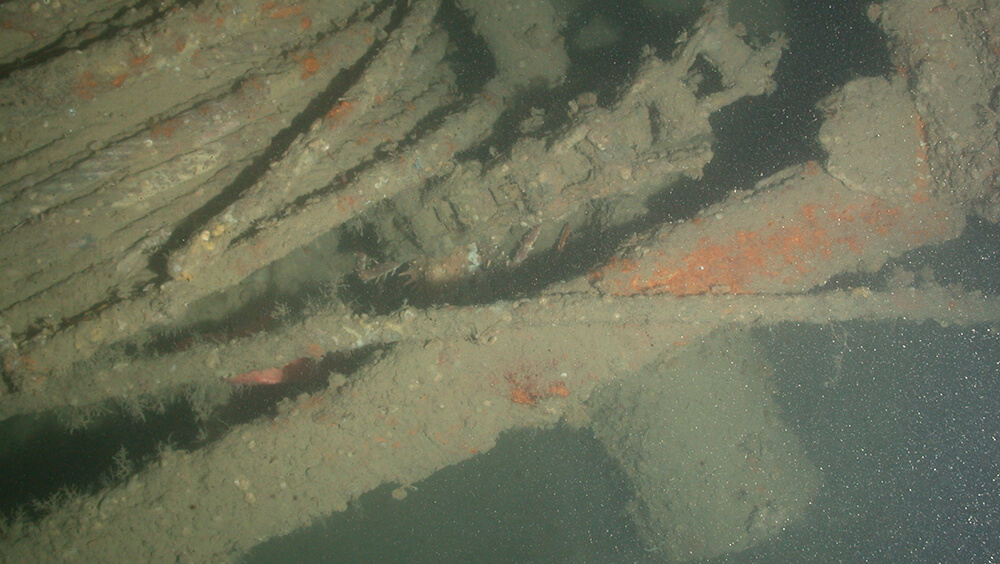
Designed by renowned naval architect Thomas F. McManus, the fishing schooner Joffre was launched by Arthur D. Story of Essex, Massachusetts in 1918. Initially, Joffre entered the mackerel seine fishery, but within a year, its owners set the schooner after groundfish. During the 1920s, Joffre's crew landed record catches of halibut. After dory trawling for haddock and halibut for nearly 20 years, Joffre's new captain, Simon Theriault, converted the 105-foot long vessel into an eastern-rig dragger to pursue Acadian redfish, a rapidly developing fishery. Joffre's working life spans the mechanization of New England's fisheries and exemplifies the transition from sail to diesel power. During its 29-year career, it landed over 15 million pounds of fish.
After a routine 10-day fishing trip to Nova Scotia's offshore banks, Joffre's engine caught fire as it was returning to Gloucester, Massachusetts on the evening of August 9, 1947. The fire quickly engulfed the wheelhouse and engine spaces, forcing the 10-man crew to abandon ship into dories without gathering their personal effects. Despite efforts to quench the blaze and tow the vessel to port, Joffre sank the next morning.

